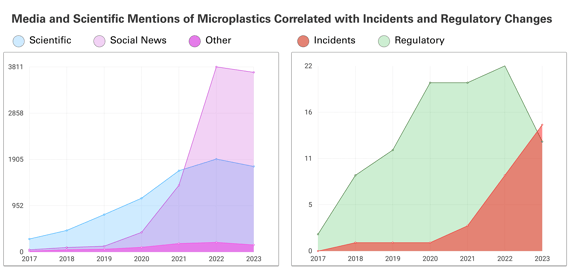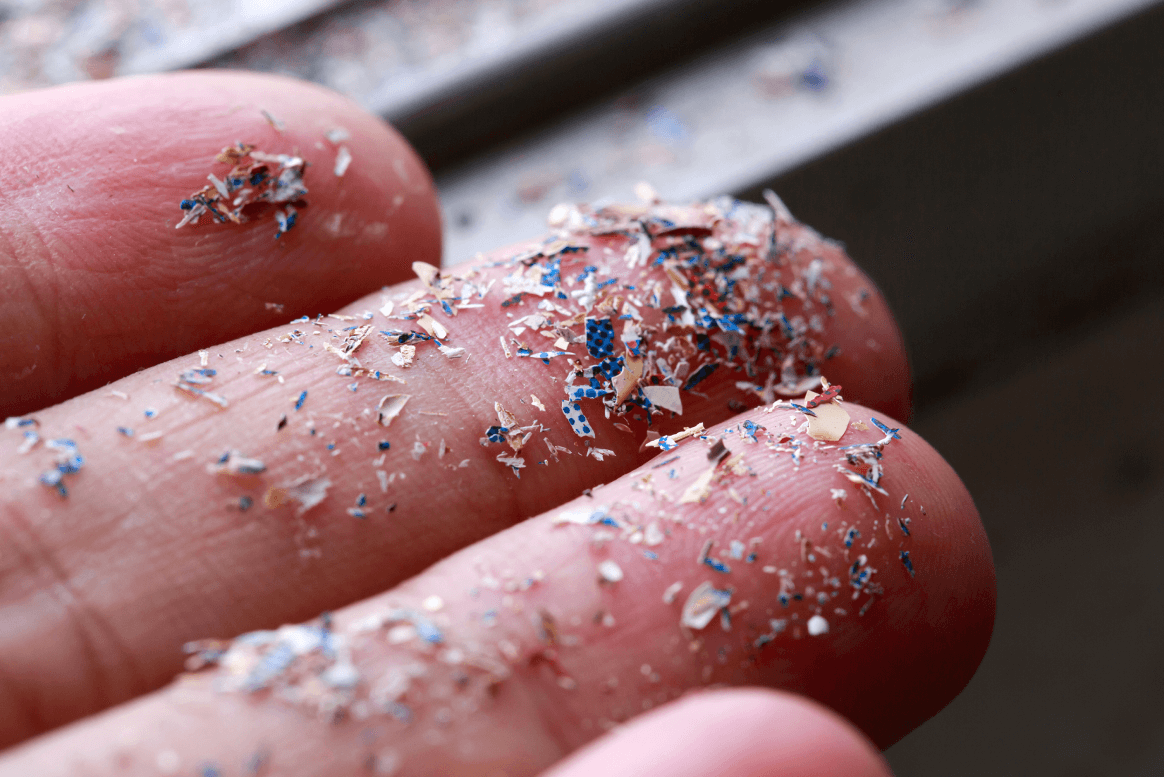In a world inundated with plastics, our exposure to microplastics has become an alarming reality. Recent research highlights the astonishing fact that the average person inhales a credit card-sized amount of plastic every week. These minute particles originate from everyday items like clothing, food packaging, cosmetics, and car tires, eventually finding their way into our bloodstream, baby feces, placentas, and even breast milk. A recent study published in the journal Physics of Fluids indicates that we inhale about 16 bits of microplastic every hour, equivalent to a credit card's worth each week. This revelation has brought to light a concerning new dimension of plastic pollution.
Microplastics in Food: Unseen Intruders in our Bodies
Research has uncovered that these microplastics can become lodged in our airways, remaining there over time. However, the long-term consequences on our health are still not fully understood. Disturbingly, studies indicate that people in the U.S. consume tens of thousands of microplastic particles annually through food and water. This staggering figure equates to the size of two giraffes in a single year, and the entire Eiffel Tower in a lifetime. Even more concerning is the revelation that over 3,200 of the 13,000 chemicals associated with plastics are deemed hazardous to human health.
Correlating Microplastics with Health Risks
Emerging studies are beginning to draw connections between microplastics and respiratory issues such as lung inflammation, shortness of breath, and a heightened risk of lung cancer. Experiments on rats indicate that when microplastics infiltrate lung cells, they can disrupt cell composition, potentially leading to lung injury in humans. Moreover, specific types of plastics, like polypropylene, found in disposable containers and face masks, have been linked to damaging cellular structures, causing lung inflammation.
Urgent Need for Further Research on Microplastics in Food
While the study of microplastics and human health is in its nascent stages, one thing remains clear: vulnerable communities bear the brunt of plastic's life cycle impacts. Indigenous populations, low-income communities, and predominantly Black communities face disproportionate health risks due to plastic production, use, and degradation. Additionally, workers in fossil fuel and plastic production sectors, as well as communities near production and disposal sites, experience elevated rates of cancers, respiratory diseases, and pregnancy complications.
The Environmental Toll of Plastic Production and Microplastics in Food
Approximately 99% of plastic is derived from fossil fuels, contributing significantly to global greenhouse gas emissions. The production process itself introduces human carcinogens and endocrine disruptors, compounding the toxicity of plastics. As we inhale microplastics, we may also be exposed to additional harmful chemicals.
The Clouded Reality of Microplastics in Food
Recent studies have even detected microplastics in clouds, underscoring the pervasive nature of this issue. From the peaks of Mount Fuji to the depths of caves in Missouri, microplastics are omnipresent. Addressing the issue of plastic air pollution is paramount to averting potential climate change and ecological risks.
SGS Digicomply Intelligence: Microplastics in Food
While scientific studies have not yet conclusively proven the immediate danger of microplastics for human health, it's imperative to acknowledge the significant surge in references to "Microplastics in food." This uptick encompasses a range of sources, from scientific publications to media mentions. In the EU, there is a plan to ban intentionally added microplastics and ensure the possibility of recycling all plastic packaging by 2030. Furthermore, there have been individual recalls of products such as table salt and doughnuts due to concerns about the presence of microplastics. This surge of attention strongly suggests that regulatory bodies may soon be compelled to take action, and laboratories will likely embark on more extensive research to assess the true extent of harm caused by microplastics. To mitigate risks and safeguard consumer health, we strongly advise diligent monitoring of the situation through SGS Digicomply.

Conclusion
As the prevalence of microplastics in our food supply and environment continues to raise concerns, proactive measures are crucial. SGS Digicomply Intelligence provides valuable insights and data to help navigate the complexities of food safety, including the emerging issue of microplastics in food. By leveraging this comprehensive platform, we can work towards a safer and more sustainable future. Together, let's take steps to safeguard our health and the environment from the pervasive impact of microplastics in food. Explore SGS Digicomply platform now.





.webp?width=1644&height=1254&name=Food%20Safety%20Dashboard%201%20(1).webp)
